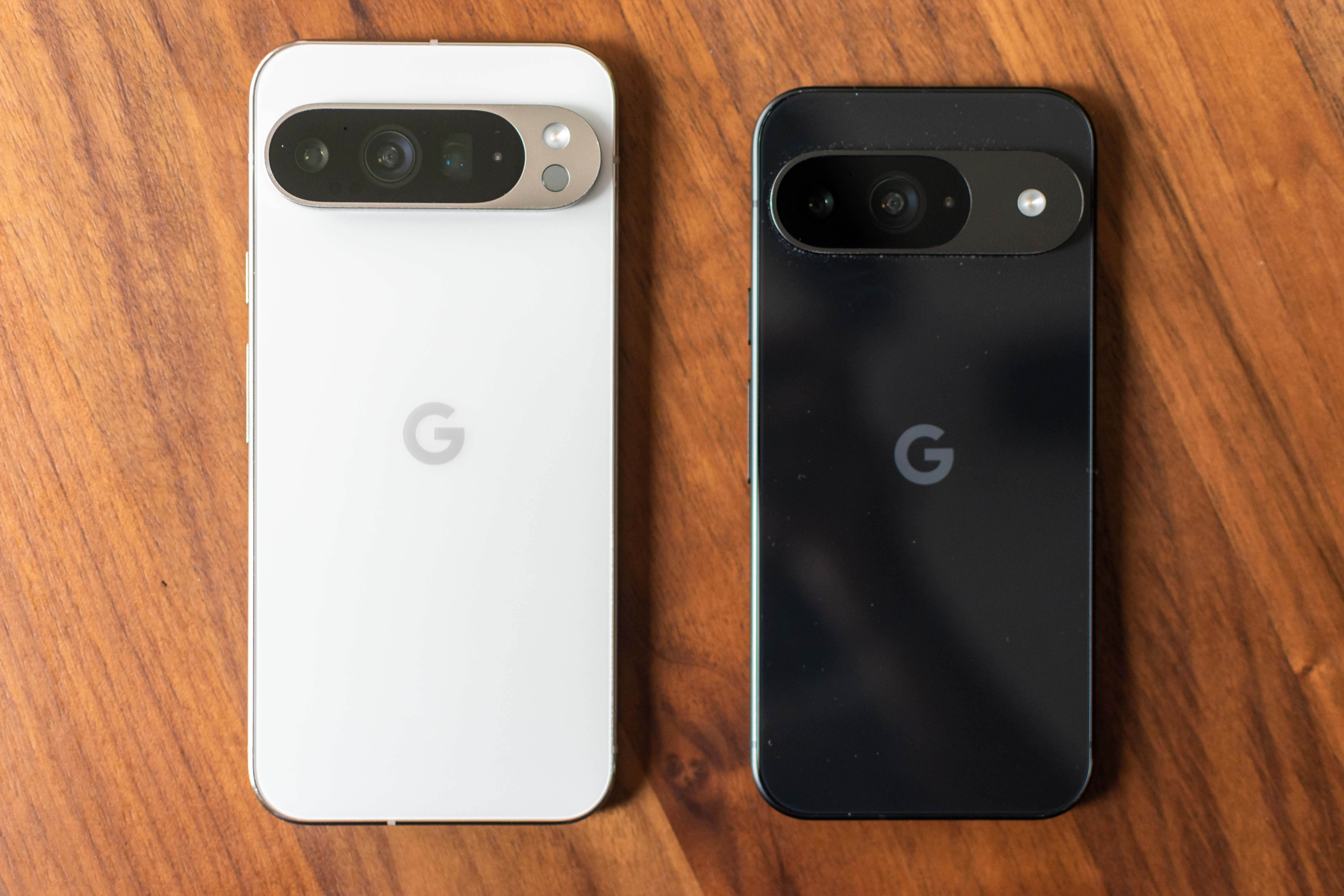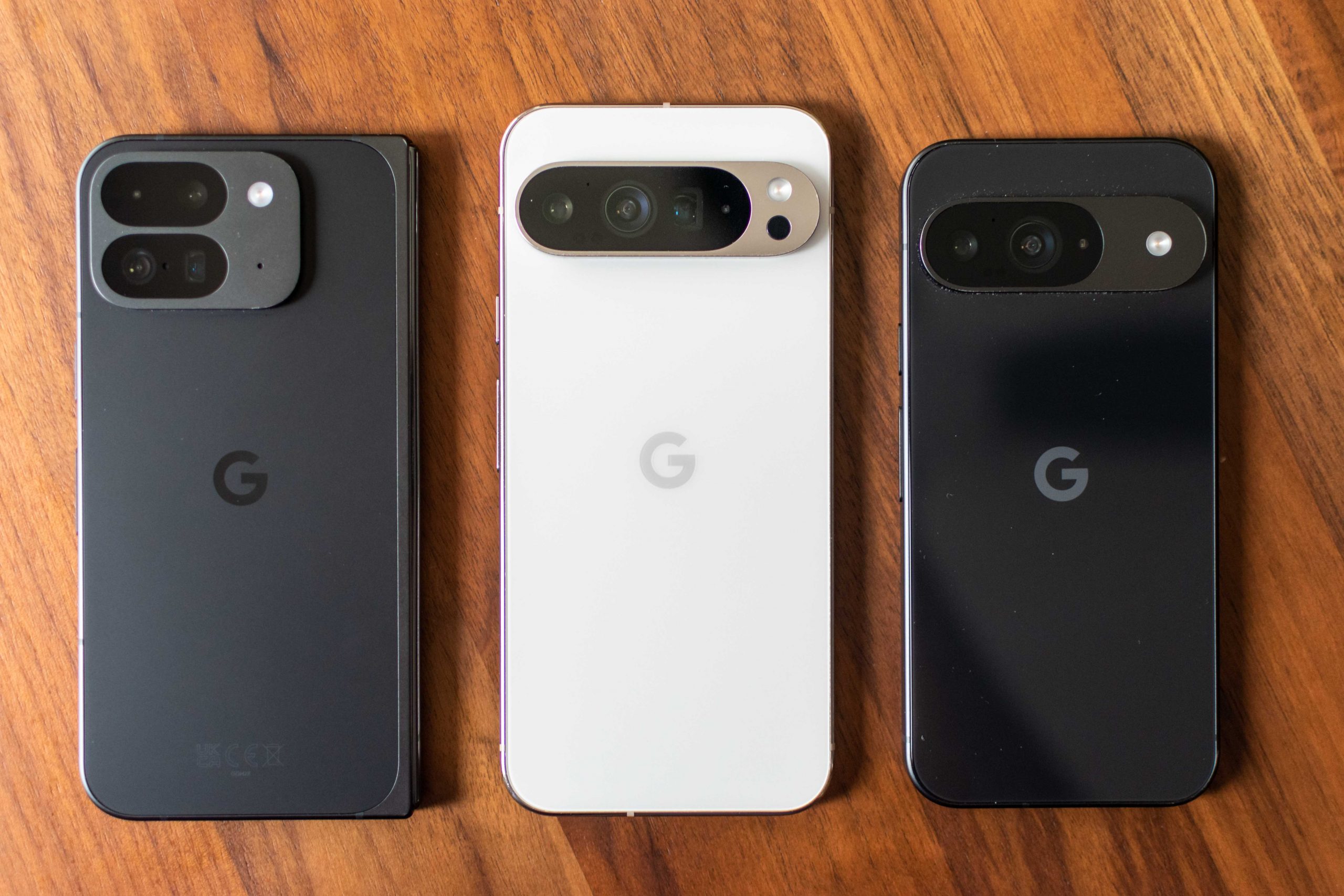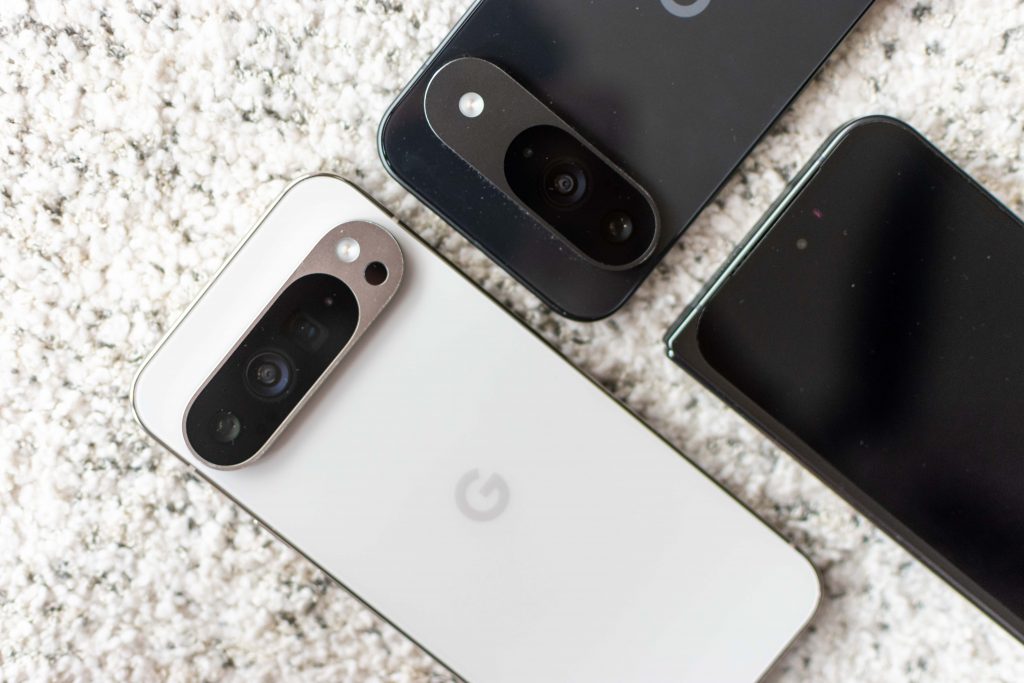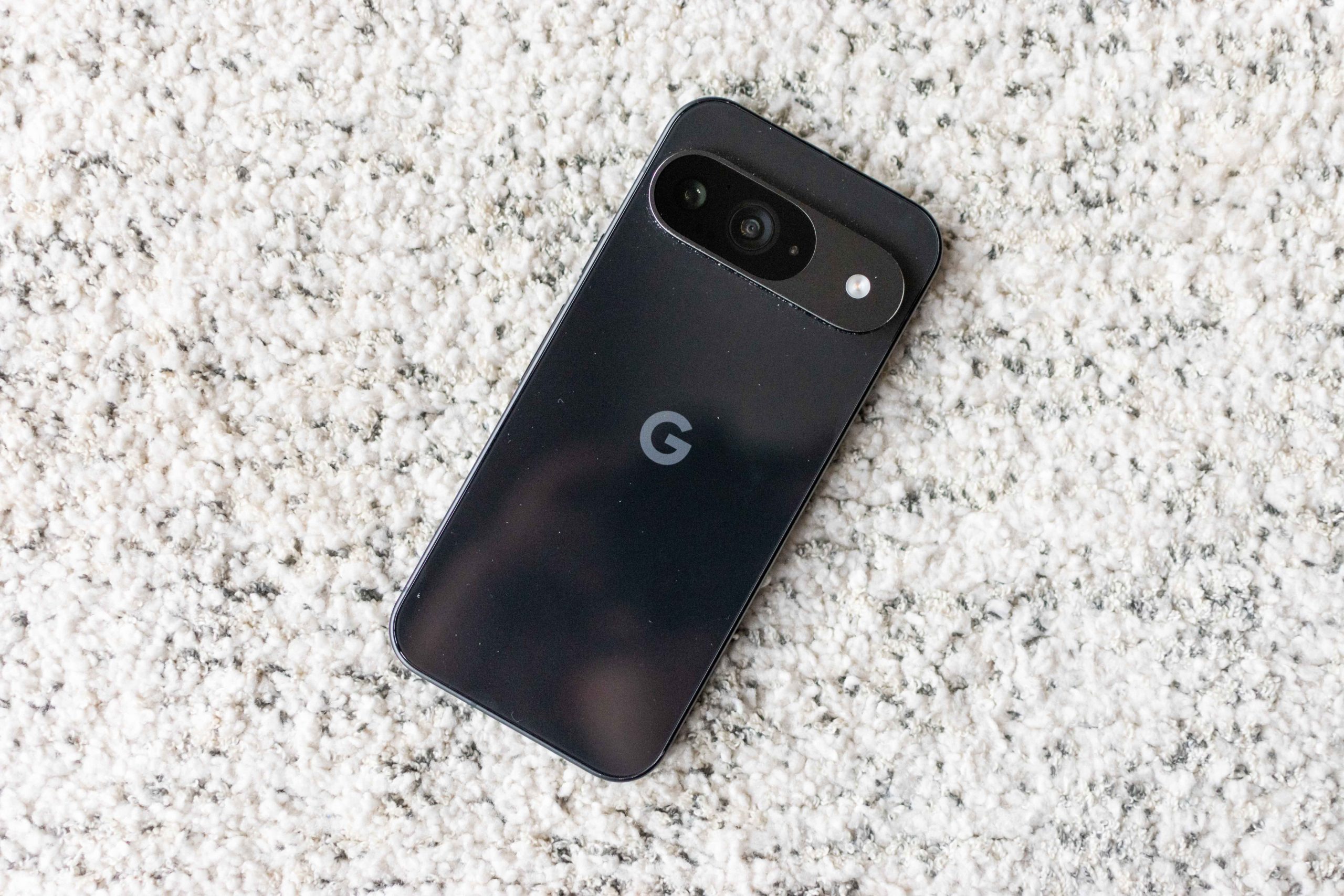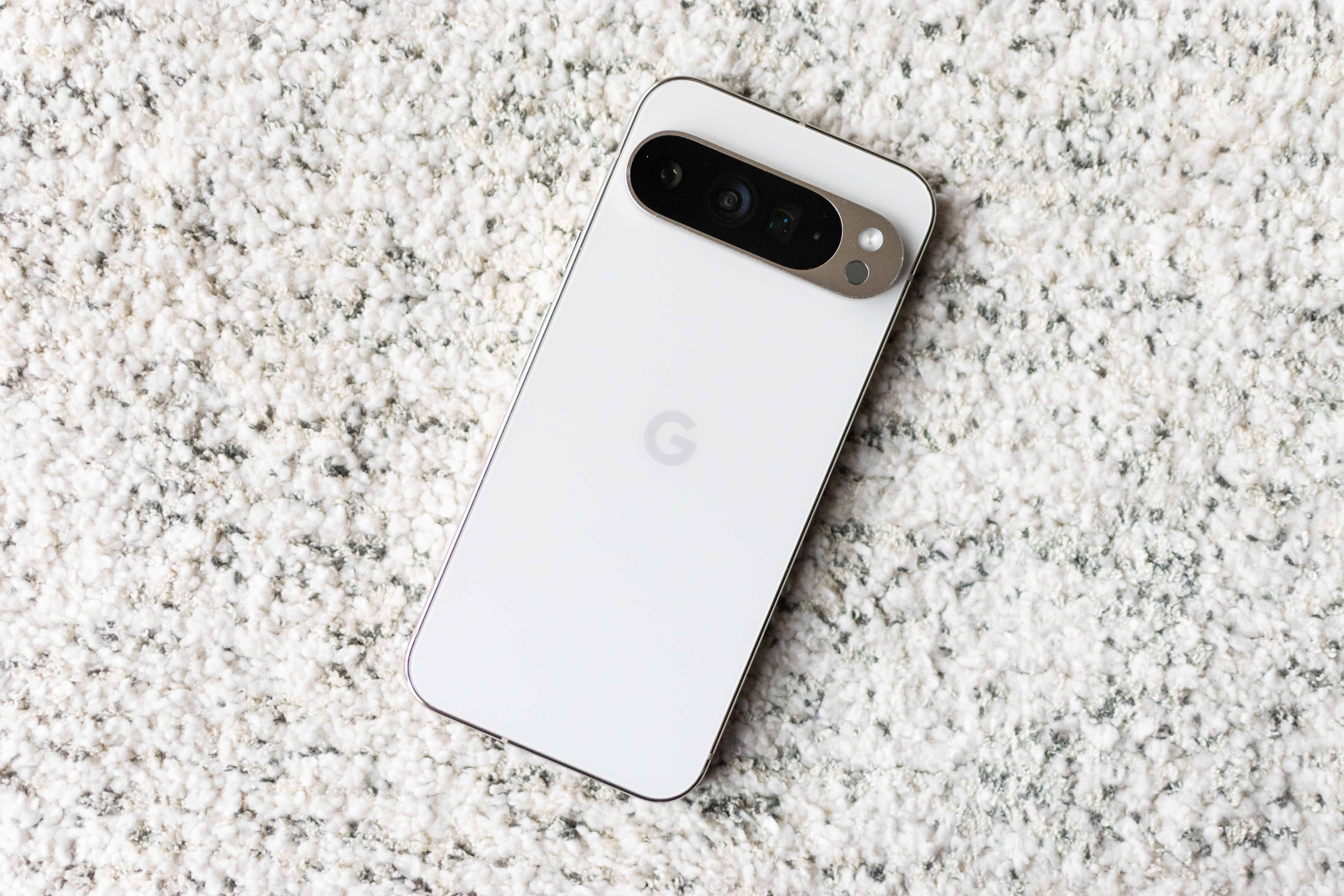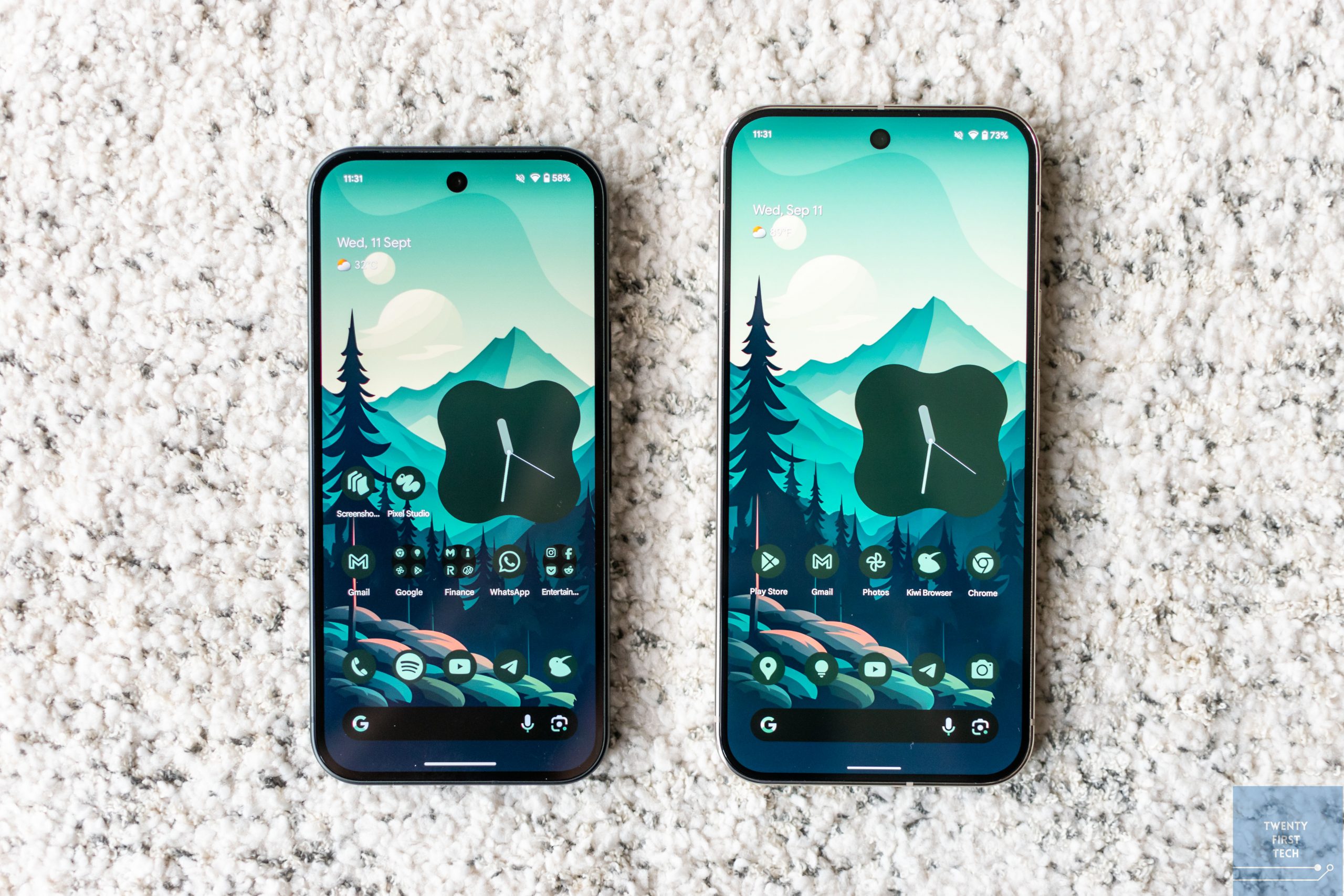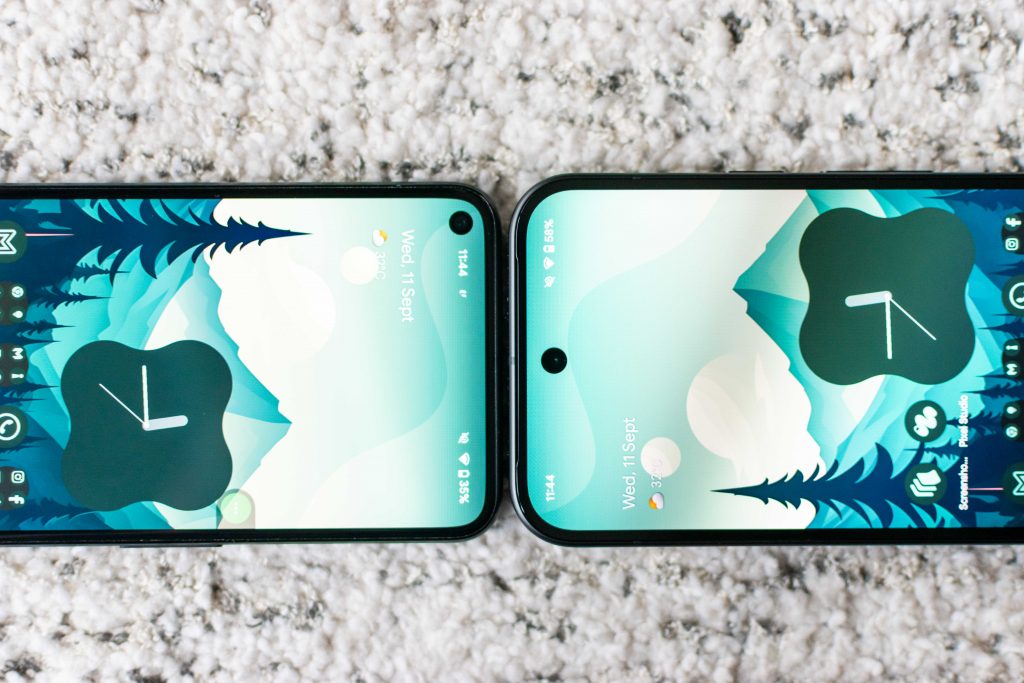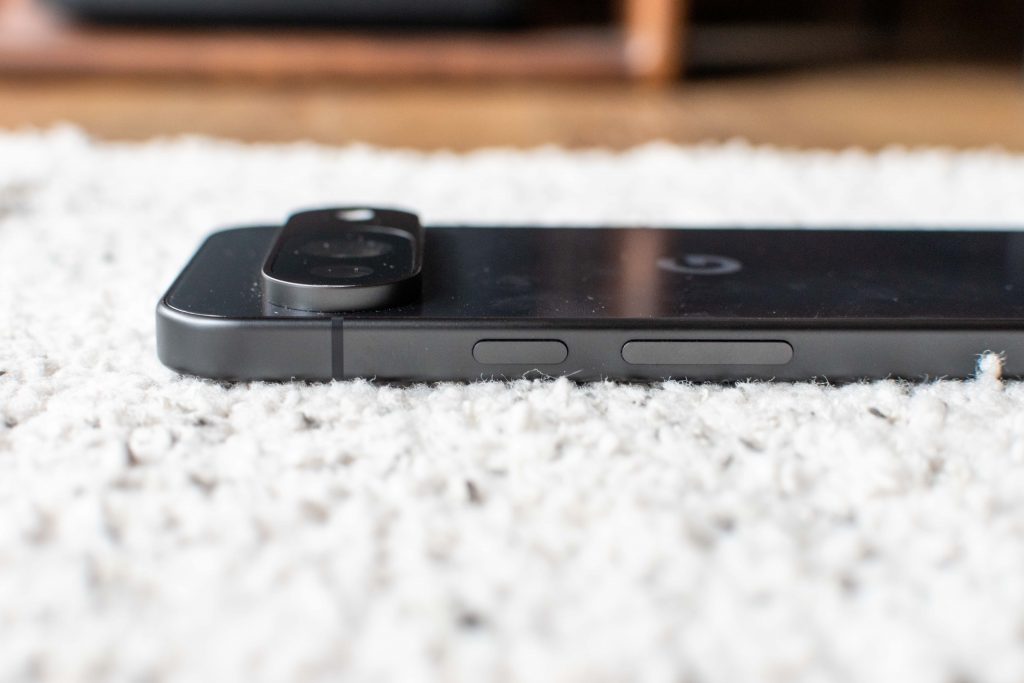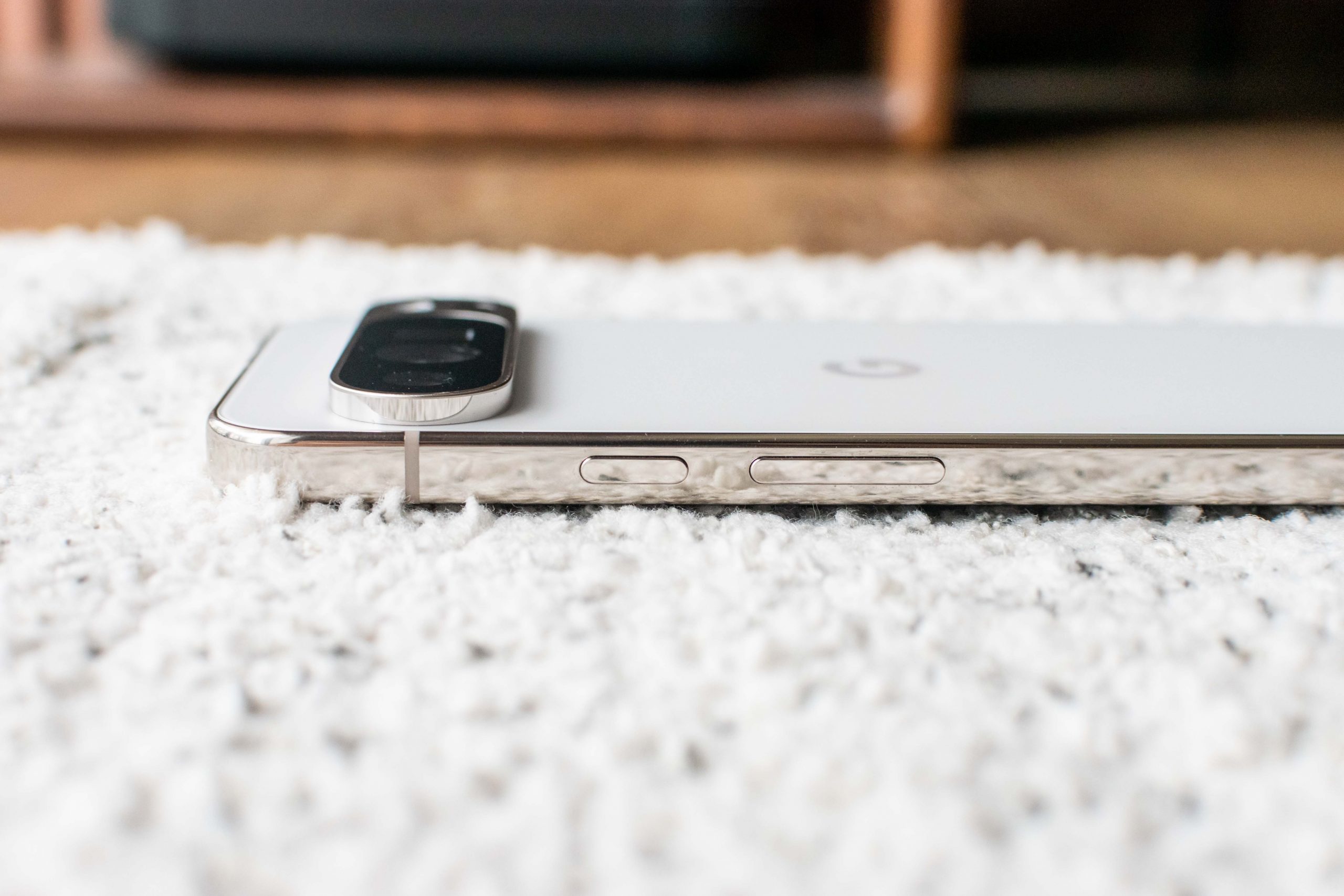Every once in awhile a review comes along that poses more significance than usual, as I myself am in the market for a new phone. This is such a review. The Pixel 5 that I got second-hand at the start of 2022 is starting to show its age – the power button fell off, and the battery needs to be charged 2-3 times throughout the day, to name a few issues. Admittedly not huge inconveniences, but enough for me to consider purchasing a new phone.
The reason that I’ve been putting it off is that I’ve decided that my next phone would be a compact flagship with a telephoto camera. Which is unfortunate as pretty much the only phones that fit that description are the Samsung Galaxy S24 or iPhone 15 Pro. While last year’s Pixel 8 was a marked improvement over the Pixels 6 and 7, it lacked a telephoto camera, had mediocre battery life, and its processor and modem had thermal and efficiency issues.
That’s why I’ve been eagerly anticipating the launch of this year’s Pixels. If rumours were to be believed, the Pixel 9 Pro was shaping up to match my requirements exactly. And it has, on paper at least.
Unfortunately however, I was not given a Pixel 9 Pro for review. In fact, very few people outside of the United States have had their hands on a Pixel 9 Pro. Instead, Google has chosen to launch the Pixel 9 and Pixel 9 Pro XL earlier than usual this year, while the 9 Pro has been delayed to arrive in the coming months.
So this review is interesting for me as while I do not have a Pixel 9 Pro on hand, I do have both the Pixel 9 and Pixel 9 Pro XL. And given that the Pixel 9 Pro is basically the specs and features of the Pixel 9 Pro XL crammed into the body of a Pixel 9, I think I have some sense of what the Pixel 9 Pro is like after using the latter two devices over the past few weeks.
Given this, I’ve decided to combine the reviews into a single one where I’ll talk about my thoughts on the Pixel 9 lineup as a whole.
As a full disclosure, I used the Pixel 9 Pro XL as my daily driver for about 3 days before handing it over to my editor, Wen Rui. I then switched to daily-driving the Pixel 9 for about 2 weeks, and had a couple more days to mess with the Pixel 9 Pro XL before the review window ended. Hence, my perspectives on the Pixel 9 Pro XL will be supplemented by Wen Rui’s experience.
You may have noticed that the Pixel 9 Pro Fold has been left out of the conversation – that’s actually arriving earlier than the Pixel 9 Pro here in Singapore, and I’ll have a separate review of that out shortly. There’s much more to say about that given it will be my first time daily driving and reviewing a foldable.
Let’s start with a specs comparison.
Pixel 9 Family Key Specifications
| Phone | Pixel 9 | Pixel 9 Pro | Pixel 9 Pro XL |
| Build | 152.8 x 72 x 8.5 mm, 198g IP68 dust and water resistance | 152.8 x 72 x 8.5 mm, 199g IP68 dust and water resistance | 162.8 x 76.6 x 8.5 mm, 221g IP68 dust and water resistance |
| Display | 6.3″ 60-120Hz OLED, 1800 nits, 2700 nits (peak) 1080 x 2424 pixels Gorilla Glass Victus 2 | 6.3″ 1-120Hz OLED, 2000 nits, 3000 nits (peak) 1280 x 2856 pixels Gorilla Glass Victus 2 | 6.8″ 1-120Hz OLED, 2000 nits, 3000 nits (peak) 1344 x 2992 pixels Gorilla Glass Victus 2 |
| Processor | Google Tensor G4 | Google Tensor G4 | Google Tensor G4 |
| Storage/Memory | 128/256GB UFS3.1 12GB RAM | 128/256/512 UFS3.1 16GB RAM | 128/256/512GB/1TB UFS3.1 16GB RAM |
| Cameras | Main: 50 MP, f/1.7, 25mm, 1/1.31″ Ultrawide: 48 MP, f/1.7, 123˚, 1/2.55″ Selfie: 10.5 MP, f/2.2, 20mm,1/3.1″ | Main: 50 MP, f/1.7, 25mm, 1/1.31″ Ultrawide: 48 MP, f/1.7, 123˚, 1/2.55″ Telephoto: 5x zoom, 48 MP, f/2.8, 113mm, 1/2.55″ Selfie: 42 MP, f/2.2, 17mm | Main: 50 MP, f/1.7, 25mm, 1/1.31″ Ultrawide: 48 MP, f/1.7, 123˚, 1/2.55″ Telephoto: 5x zoom, 48 MP, f/2.8, 113mm, 1/2.55″ Selfie: 42 MP, f/2.2, 17mm |
| Battery | 4700 mAh 27W wired 15W wireless (w/ Pixel Stand) 12W wireless (w/ Qi compatible charger) | 4700 mAh 27W wired 21W wireless (w/ Pixel Stand) 12W wireless (w/ Qi compatible charger) | 5060 mAh 37W wired 23W wireless (w/ Pixel Stand) 12W wireless (w/ Qi compatible charger) |
| Additional features | – | Pro camera controls Zoom Enhance Video Boost w Night Sight UWB chip Temperature sensor | Pro camera controls Zoom Enhance Video Boost w Night Sight UWB chip Temperature sensor |
| Colours | Obsidian, Porcelain, Wintergreen, Peony | Porcelain, Rose Quartz, Hazel, Obsidian | Porcelain, Rose Quartz, Hazel, Obsidian |
| Price | S$1,199/1,339 | S$1,459/1,599/1,799 | S$1,599/1,739/1,919/ 2,249 |
Design & Build
This is where the limits of my definition of a “compact flagship” are being tested. The Pixel 9 (and by extension the Pixel 9 Pro) is ever so slightly larger and heavier than the Pixel 8. Unfortunate, as I had hoped that they’d go in the other direction and shrink the footprint further with this new generation.
The size isn’t the major issue however; it’s the weight. At 198g (199g for the Pro), the Pixel 9 is much heavier than its size would suggest, just 23g shy of the much larger Pixel 9 Pro XL, 30g heavier than the Samsung Galaxy S24, and 27g heavier than the iPhone 15. Not much of an issue when you’re out and about, but for longer sessions lying in bed for instance, the phone gets tedious to hold.
After a few weeks daily-driving the Pixel 9 however, I’ve grudgingly decided that I’m able to look past this. This is partially due to the fact that the phone is fortunately one-handeable for me. I do most of my typing via one-handed swiping, and I haven’t had issues doing so with the Pixel 9. This is unlike the Pixel 9 Pro XL, which is much more comfortable two-handed.

Design-wise, Google has flattened the sides and back this year, in keeping with Apple and Samsung. I’m quite ambivalent about this change. On the one hand, the phones certainly feel more premium in the hand, and are more secure when holding in landscape as the flat sides offer more surface area to grip. On the other hand, the curves of the Pixel 8 are more comfortable to hold. It ultimately boils down to personal preference, and I don’t mind the change.
I’ve also gotten my hands on the official cases for the Pixel 9 and Pixel 9 Pro XL. While both cases feel high quality, I found that they made the phones way too bulky. I’d find alternative thinner cases, or just go caseless.
Display
This year, Google bumped up the brightness of the displays across the board. The Pixel 9 now hits 1,800 nits outdoors, and 2,700 nits for bright spots when viewing HDR content. For Pixel 9 Pro and Pro XL, these numbers are slightly higher at 2,000 and 3,000 respectively. These are considerably brighter than last year’s Pixels, although those were already plenty bright enough to begin with. Outdoor visibility isn’t an issue, even with Singapore’s ridiculously harsh sunlight.
The Pixel 9’s display remains at 1080p, while the Pro models have slightly higher resolution. The Pixel 9’s display also only ranges from 60-120Hz, while the Pro models can go all the way down to 1Hz. In practice, I don’t see a noticeable difference between the displays; they’re all excellent.
One thing to note is that you’ll have to change the settings to get the most out of these displays. Out of the box, the Pixel 9 runs at a fixed 60Hz as “smooth scrolling” is turned off by default. On the Pixel 9 Pro XL, while “smooth scrolling” is on by default, the resolution is set to 1008 x 2244, and you’ll have to manually toggle it to the full 1344 x 2992.
Another minor point is that the Pixel 9 has bezels that are slightly thicker than what I’d expect from a flagship phone in 2024. Next to an S24, an iPhone 15 Pro, and the Pixel 9 Pro XL, the Pixel 9 had noticeably larger bezels. It’s not as bad as the Pixel 8a from earlier in the year though. But hey, at least the bezels are uniform.
Battery Life
Battery life on this year’s Pixels are good. There are sites out there claiming that the battery life is excellent, but I wouldn’t go that far. It’s no OnePlus 12 or iPhone 15 Pro Max. In fact, while it’s comparable to the Galaxy S24’s battery life, it’s just shy of the iPhone 15. But after many generations of mediocre Pixel batteries, I can understand why some are getting a little overhyped about this.
My typical day consists of ~5h of screen on time, and both the Pixel 9 and Pixel 9 Pro XL hit that with between 30-40% battery left at the end of the day. This is with somewhat heavy usage with plenty of YouTube, background Spotify streaming, web browsing, texting over WhatsApp and Telegram, GPS navigation with Android Auto, and some 2D games (The Case of the Golden Idol and Arranger).
Here’s a few examples for context. One time, I used the Pixel 9 as a WiFi hotspot for 2 hours, and my battery went from 72% to 62%. Another time, I did GPS Navigation and Spotify streaming over Android Auto for 47 min, and the battery went from 25% to 16%.
There was a day where I really pushed the Pixel 9 to its limits. I started the day at 7am, played over 3 hours of The Case of the Golden Idol, did about an hour of Android Auto GPS navigation with Spotify streaming, about an hour of YouTube, and several more hours of streaming Spotify over my Bluetooth earphones. At midnight, I had hit 8 hours of screen on time, and 6% battery remaining. That’s not bad at all.

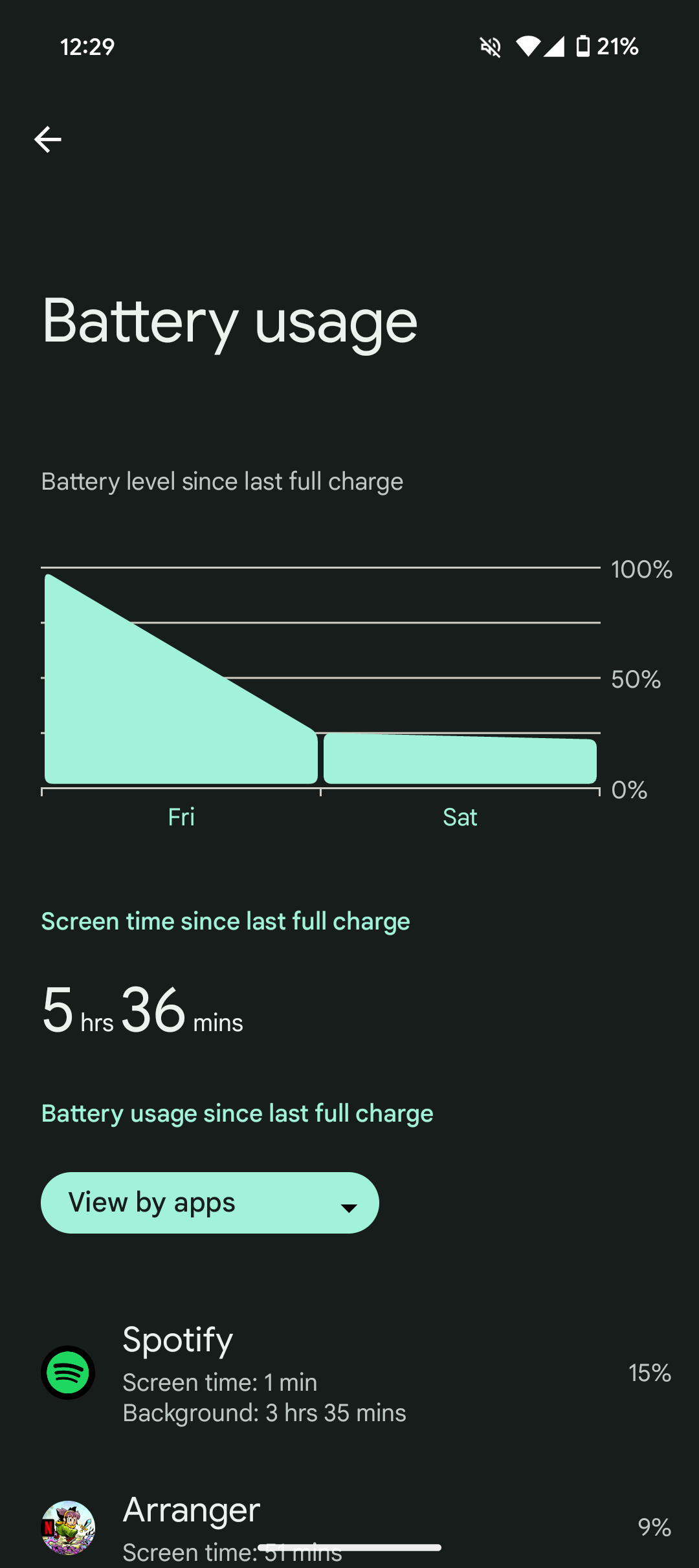




I have to caveat that I’m on a 4G network instead of a 5G one, which might add to some longevity. Also, note that I never had battery saver turned on. While most of my testing was done on the Pixel 9, it seems from other reviews that the Pixel 9 Pro, and surprisingly, the Pixel 9 Pro XL, all have similar battery life.
As good as that is, I can’t help but feel I want more. Sure, the Pixel 9 and 9 Pro XL are able to handle my heaviest workload today, but that just means they won’t be able to do so a year or two from now. My Pixel 5 battery started out remarkably strong as well, and now a little over 2 years in, I charge the damned thing twice or thrice daily. I’d be a lot more confident if even my heaviest workload left the Pixel 9 at ~30% battery currently, as that would mean that it’s more likely to last me a full day even 2, 3 years in the future.
There’s been some controversy online about the Pixel 9 family’s charging speed and compatibility with chargers, but it hasn’t been much of an issue for me as I leave the phone to charge overnight. You’ll have to do your own research if this sounds like it might concern you.
On long-term battery health, there’s adaptive charging which slowly tops the phone up to full right before your alarm rings in the morning. There’s a rumour that Android 15 might allow you to set the charging limit to 80% to ensure even better longevity. That would be a welcome addition as battery degradation is a serious problem, and it’s clear from multiple reports that the Pixel 9 isn’t very repairable. Companies such as OnePlus have already introduced the 80% limit feature in their phones.
Performance
Is the day-to-day performance of the Tensor G4 comparable to Snapdragon 8 Gen 3 flagships? Yes, unless you play intensive 3D games. I found performance in day-to-day usage (as illustrated in the battery life section) to be excellent. In particular, apps launch quickly, and animations are fluid with no memorable instances of lag or stutter.
Of course, comparing synthetic benchmarks, the Pixels don’t come close to the Snapdragon 8 Gen 3, which itself is soon to be replaced by the Snapdragon 8 Gen 4. Synthetic benchmarks are hardly indicative of real-world usage though, so I wouldn’t put much weight into those results. Maybe if you play a lot of 3D games on your phone, but I don’t.
I tried Genshin Impact on the Pixel 9 Pro XL with the framerate set to 60fps, but the phone was only able to hit 40-ish fps even with lowered graphics settings. There was also noticeable frame drops and stutter. To be fair, Genshin is a rather demanding game. Playing regular sessions of Pokemon Unite, Wen Rui noted that the phone performed well without getting too warm. Running 2D games like Arranger or The Case of the Golden Idol was also perfectly fine with no heat or performance issues.
This year’s Pixels all got a 4GB RAM boost across the board. Google has said that the reason for this increase in RAM is to enable on-device Gemini Nano. I reached out to them to ask if the model is always loaded in memory, and if this would impact RAM available for other apps. They gave me a non-answer. Fortunately, the folks over at Android Authority did their own testing and found that the Pixel 9 Pro and Pro XL have 3GB of RAM reserved for Gemini Nano, leaving 13GB available for other apps. The Pixel 9 doesn’t have this reserved partition in its 12GB of RAM. That means in practice, the Pixel 9 and Pixel 9 Pro/XL have roughly the same amount of RAM available for apps, and hence should have a similar multitasking experience.
I didn’t find much issues with apps staying in memory, except for one time when switching to Telegram to respond to a message relaunched Arranger. Frustrating, as my progress from the last 10 minutes was lost. It was just a one-time occurrence though, and I haven’t been able to replicate it since.
What exactly the on-device Gemini Nano is actually used for is also another question. When first opening the Pixel Studio app, it prompts you to download an AI model “to edit images”, whereas the text-to-image model actually resides in the cloud. If you put the phone on airplane mode however, Pixel Studio just refuses to launch, saying that you’re offline. What’s the point of the local model then? Definitely not to run the Gemini voice assistant, or the Magic Editor, as those also don’t work in airplane mode. But more on the AI features later.
Cameras
They’re excellent, as usual. This year, the ultrawide camera on the Pixel 9 gets a significant upgrade with a larger, higher resolution sensor with a wider aperture, putting it at parity with the 9 Pro and Pro XL. The selfie cameras on the Pros also see a boost in resolution and a wider field of view, while the Pixel 9’s remains the same. The main and telephoto shooters are largely unchanged from the previous generation other than a wider aperture (but smaller sensor) on the latter.
Google also added a new panorama mode that supports Night Sight, improvements to Video Boost on the Pros, and Zoom Enhance which uses AI to add in details to digitally cropped shots. The headlining new feature is Add Me, which allows you to snap a photo of someone, swap places with them, then have AI stitch together the photos such that it appears like you were both in the same shot. Auto-photoshop, basically. And it works well, though I wonder if in practice I’ll bother using it, or if I’d just take a selfie.
There isn’t much to say about the cameras to be honest, they’re just extremely dependable. When I take a photo with a Pixel, I know it’s going to be good.
Here are some camera samples from the main camera:
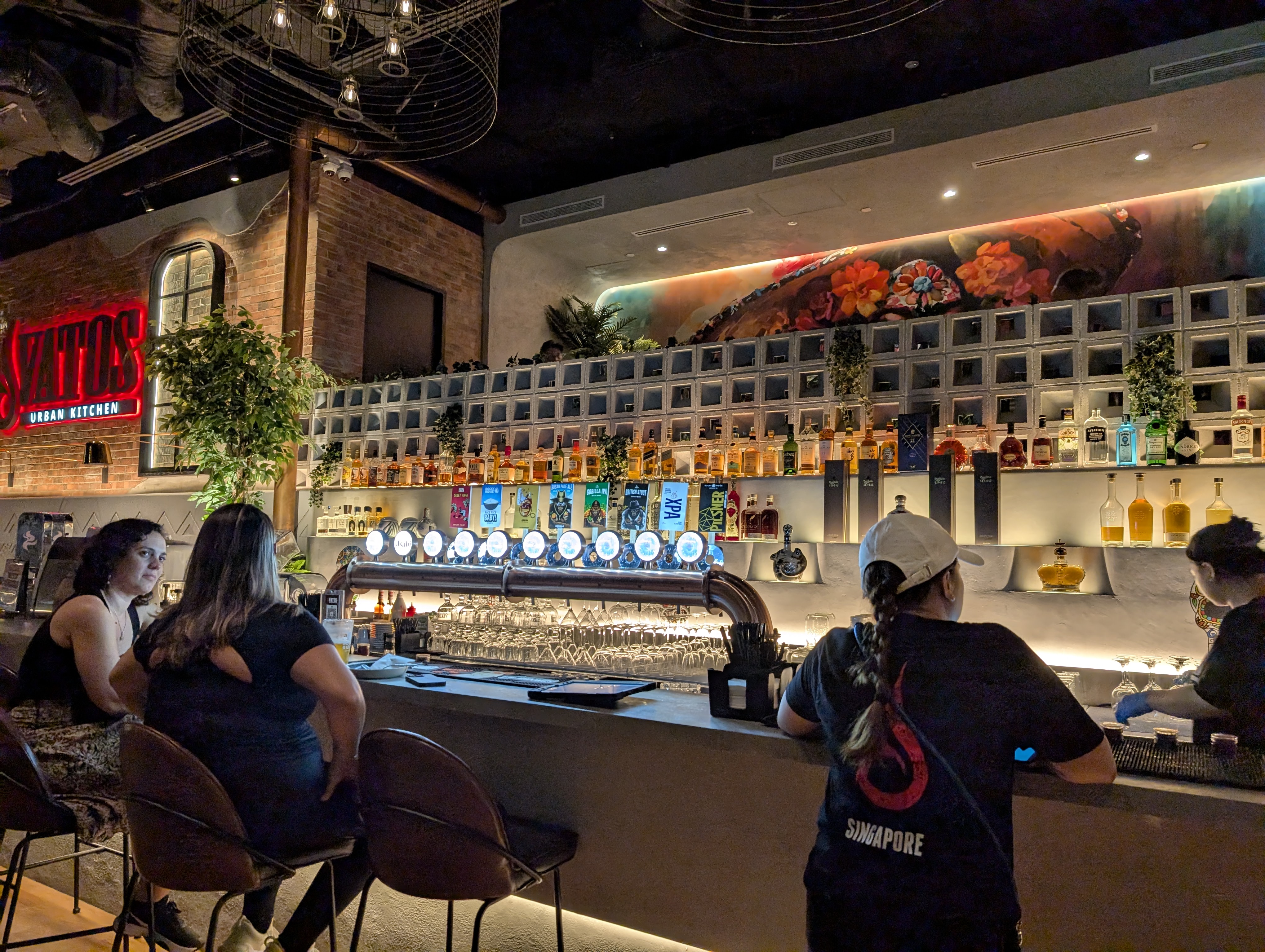






And from the ultrawide:
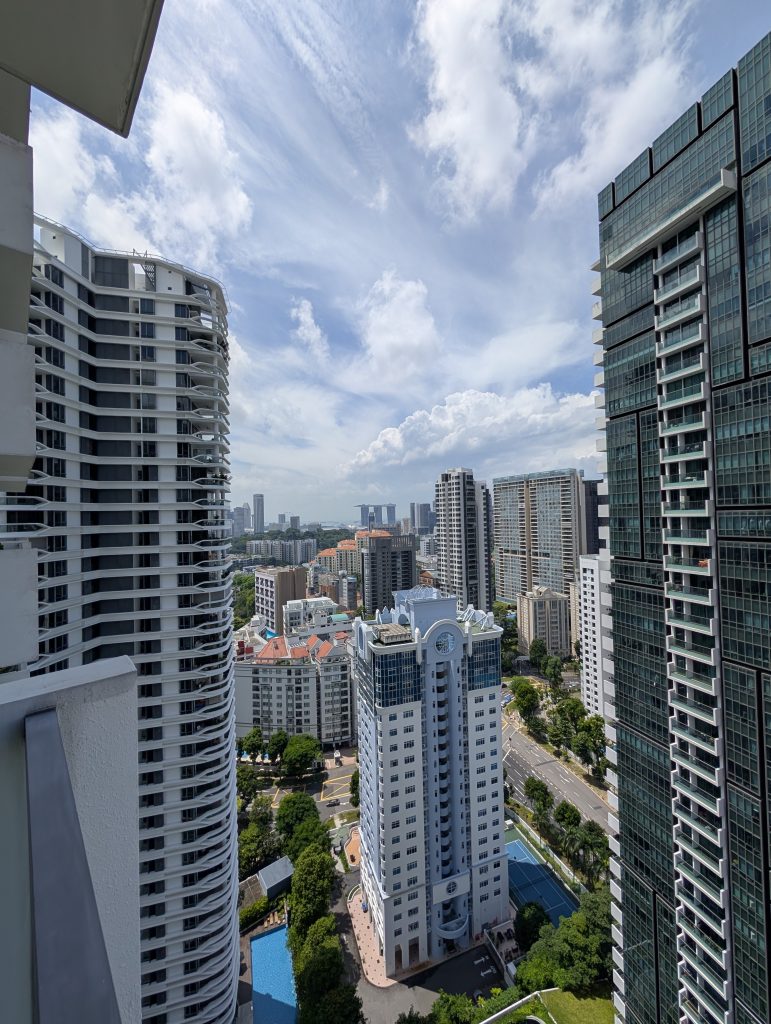


If you want good telephoto performance, you should definitely get the Pixel 9 Pro or Pro XL, as those have a dedicated telephoto lens. Comparing the 5x optical vs 5x digital zoom of the Pixel 9 Pro XL and Pixel 9 respectively below, it’s clear that the Pro captures more detail. That being said, the digital zoom of up to 8x on the Pixel 9 is certainly passable in a pinch. But note that the Pixel 9 Pro and Pro XL can zoom digitally up to 30x.

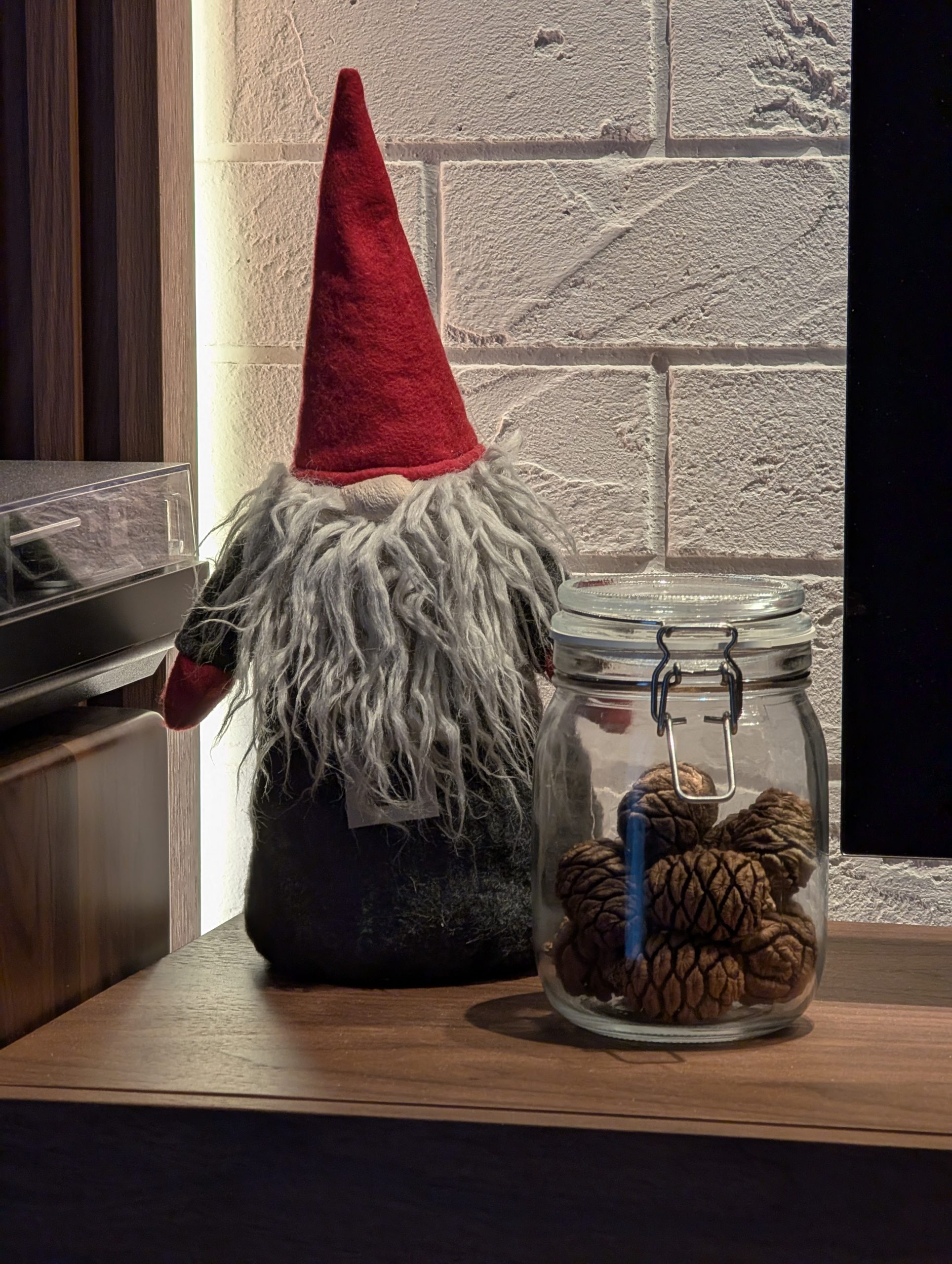


Miscellaneous
- AI. Note that I spent all this time not talking about the AI features. That’s because in the 3 weeks of using the phone, I never once found any of the AI features useful. Gemini voice assistant? I hardly used Google Assistant to begin with. Magic Editor? I don’t like lying in my photos. Pixel Studio? Never going to have use for it in a million years. I initially thought that Pixel Screenshots would be useful, but I found that I had no use for it at all during my period of daily driving the devices. And that’s the crux of the problem: I just don’t find any of the AI features useful. And until they find actually transformative use cases for AI, it will be nothing more than a cool party trick. But even worse than just being a party trick, LLMs are notorious for straight-up lying to you, and Gemini is no different. I’ve experienced two such examples:
- Gemini Nano AI weather summaries consistently lies to me, telling me that it will be bright and sunny at midday, when the app clearly forecasts thunderstorms at the time. I suspect that this is because the UV index in Singapore is always high during midday regardless of rain, but the summary is still misleading.
- One feature of Gemini is that you can pull it up in YouTube and ask it to summarise the video for you. In theory, this is cool, as it saves you time from watching an entire YouTube video. But in practice, Gemini will lie to you. For example, in Dave2D’s review video of the Pixel 9 Pro XL, he literally says “the battery life was very impressive”, but Gemini says that it has “shorter battery life” than the previous models. Why would I ever use this feature if I can’t trust if it’s telling me the truth or not?

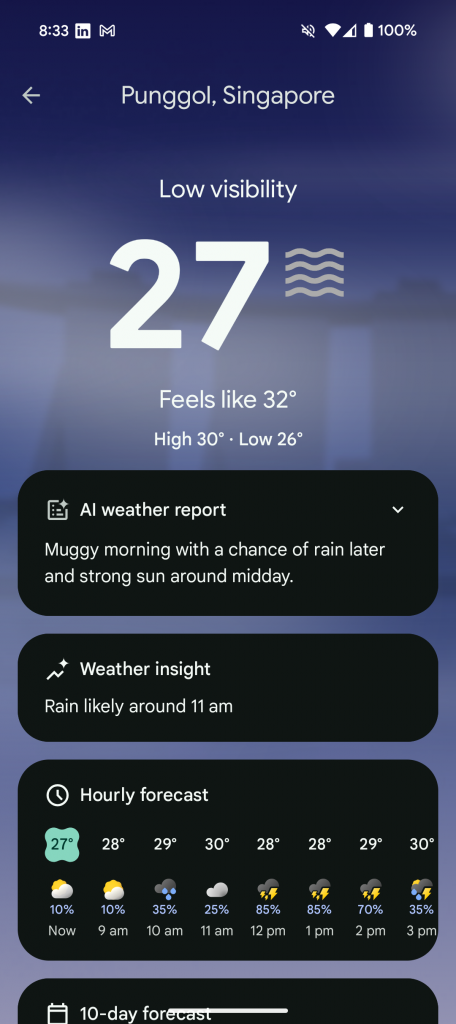

- Speakers. They produce nice, loud stereo sound. But a major issue is that the bottom-firing speaker is located such that it gets blocked by your palm when playing a game in landscape mode. To avoid this, you’d have to rotate the phone in the opposite direction to what you naturally would, which is annoying.
- Ultrasonic fingerprint reader. Yes it’s a lot faster and more accurate than the previous optical sensor, but the truth is I hardly use it as the facial unlock is too fast.
Pricing & Conclusion
Pros
- Excellent design and build quality
- Top-class bright, high-refresh OLED displays
- Fantastic confidence-inspiring cameras
- Good battery life
- Tensor G4 performs better and doesn’t run as hot as the G3
- 7 years of software support
Cons
- Still heavier than I’d like
- Prices are increased across the board
- Gaming performance can’t compare to other flagships
- AI features are mostly gimmicks
- Questionable repairability
I really like the Pixel 9 lineup. And ironically, it isn’t for any of the reasons that Google is marketing these phones for. I don’t find any of the AI features useful. I just like the aspects that make them good phones. Things like good battery life, displays, build quality, and cameras. Those are the things that I care about, and in those regards, the Pixels deliver.
I’m certain that the Pixels will be extremely popular this year. And I’m also certain that the majority of the reasons why are the reasons that I listed above. I just hope that Google doesn’t get the wrong message and think that the success of the Pixel 9 series can be attributed to the AI features.
Unless the Pixel 9 Pro Fold completely wins me over, I will very likely be buying a Pixel 9 Pro for myself and my wife. And that’s the best endorsement that I can give these phones. But when I can buy the Pixel 9 Pro remains an open question. There’s still no news on when it’ll be made available in Singapore.
Then there’s the matter of price. These phones are more expensive than I’d like, and I’m not pleased about the significant year-on-year price creep – the Pixel 7/8/9 launch prices were S$999/1,099/1,199; Pixel 7 Pro/8 Pro/9 Pro XL were S$1,299/1,549/1,599. That’s a S$200 (20%) and S$300 (23%) respective price increase in just 2 years!
The Pixel 9, Pixel 9 Pro, and Pixel 9 Pro XL start at S$1,199, S$1,459, and S$1,599 respectively, but for a measly 128GB of storage. Opting for the 256GB versions, as most people will, will increase the prices to S$1,339, S$1,599, and S$1,739.
That being said, the discounts and offers for Pixels are pretty good. At the recent 9.9 sale, a combination of Google’s $250 voucher and Shopee’s 10% off electronics voucher brought the 256GB Pixel 9 Pro XL price down from S$1,739 to S$1,340; that’s $400 off (but let’s not forget, still more expensive than the Pixel 7 Pro MSRP at launch). I’m certain that similar discounts will occur for the 10.10 sale.
But if you’re willing to wait longer, Google phone prices tend to go down quite steeply mere months after launch. At the same 9.9 sale, the 256GB Pixel 8 Pro could be had for S$939 on Shopee. That’s a whopping S$700 off its launch price of S$1,649, just 10 months after the phone’s release. More importantly, that’s S$400 (30%) less than the 256GB Pixel 9 Pro XL’s discounted price. Given the minor improvements that the 9 Pro XL brings, and the fact that the Pixel 8 Pro still has another 6 years of updates, I’d say that the Pixel 8 Pro is clearly the better deal.
For me personally, I might just pull the trigger and snag up the Pixel 9 Pro the moment it launches. I think I’ve waited long enough.
As always, when purchasing online, you can potentially get additional cashback on your purchase with ShopBack.
Liked this review? Follow us on Facebook, Twitter or Instagram!


